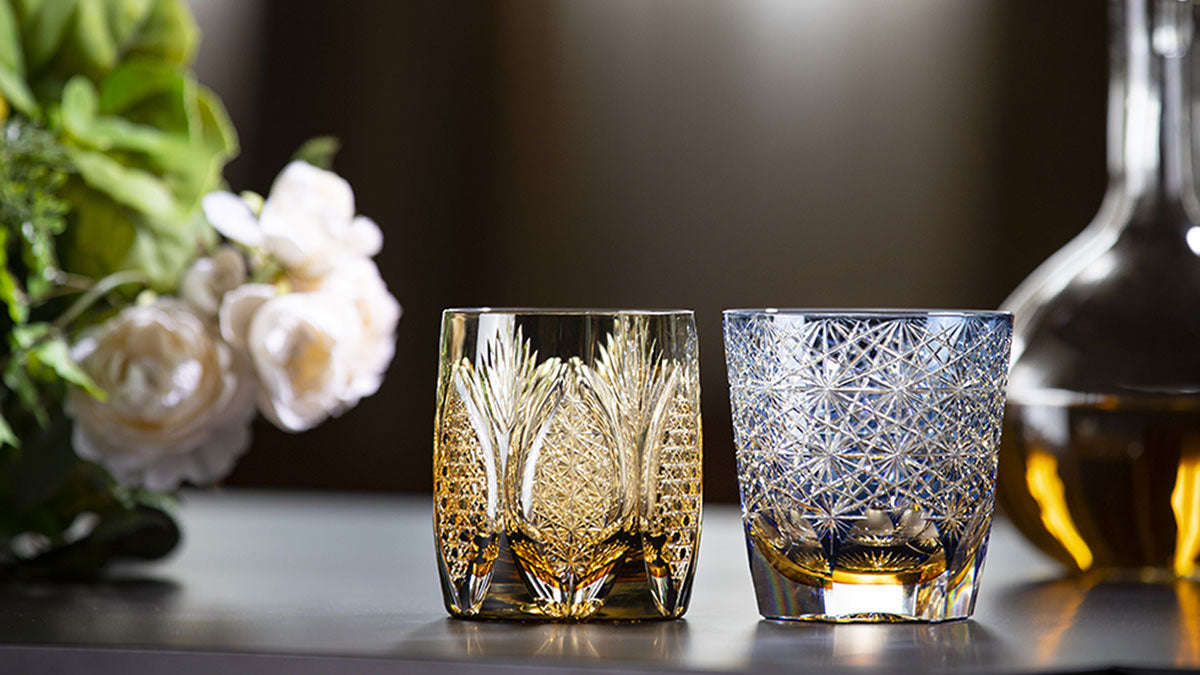free
Description

Designs wishing for prosperity and abundance
The diagonally aligned square facets in this set are a traditional Japanese auspicious pattern representing the scales and eggs of fish.
The simple yet shimmering design of this set of sake cups will surely capture your fascination.
The glittering and exquisitely designed sake pitcher not only pours sake, but can also be used to add color to your table as a pitcher for dressings or sauce.
It is recommended for celebratory occasions or as a gift for a loved one.
Information
| Manufacturer | KAGAMI CRYSTAL |
|---|---|
| Country of origin | Ibaraki, Japan |
| Technique | EDO CUT GLASS |
| Material | Crystal glass |
| Size | W3.07 * D0 * H3.94 in. (W7.8 * D0 * H10cm) |
| Weight | 0.99 lbs(450g) |
| Capacity | 10.14 oz(300ml) |
| Electronic Equipment | Microwave x, Dishwasher x, Oven x, Direct flame x, Induction x |
| Note | Name engraving is not available. Do not use metal scrubbers, cleansers, or bleach. Caution against damage due to sudden temperature changes. Do not stack. This item cannot be shipped to Australia, Taiwan, China, and Japan. |
| Delivery Time | 1-2 weeks (if out of stock + 1-2 months) |
Brand history and characteristics
How Japanese Products Can Be Such High Quality
Payment & Security
Your payment information is processed securely. We do not store credit card details nor have access to your credit card information.
![[SAKE BOTTLE] KATAKUCHI FISH SCALES | EDO KIRIKO | KAGAMI CRYSTAL](http://en.thebecos.com/cdn/shop/products/s0189-066-1_{width}x.jpg?v=1690985431)
![[SAKE BOTTLE] KATAKUCHI FISH SCALES | EDO KIRIKO | KAGAMI CRYSTAL](http://en.thebecos.com/cdn/shop/products/s0189-066-2_{width}x.jpg?v=1690985435)
![[SAKE BOTTLE] KATAKUCHI FISH SCALES | EDO KIRIKO | KAGAMI CRYSTAL](http://en.thebecos.com/cdn/shop/products/s0189-066-3_{width}x.jpg?v=1690985439)
![[SAKE BOTTLE] KATAKUCHI FISH SCALES | EDO KIRIKO | KAGAMI CRYSTAL](http://en.thebecos.com/cdn/shop/products/s0189-066-1_130x.jpg?v=1690985431)
![[SAKE BOTTLE] KATAKUCHI FISH SCALES | EDO KIRIKO | KAGAMI CRYSTAL](http://en.thebecos.com/cdn/shop/products/s0189-066-2_130x.jpg?v=1690985435)
![[SAKE BOTTLE] KATAKUCHI FISH SCALES | EDO KIRIKO | KAGAMI CRYSTAL](http://en.thebecos.com/cdn/shop/products/s0189-066-3_130x.jpg?v=1690985439)

